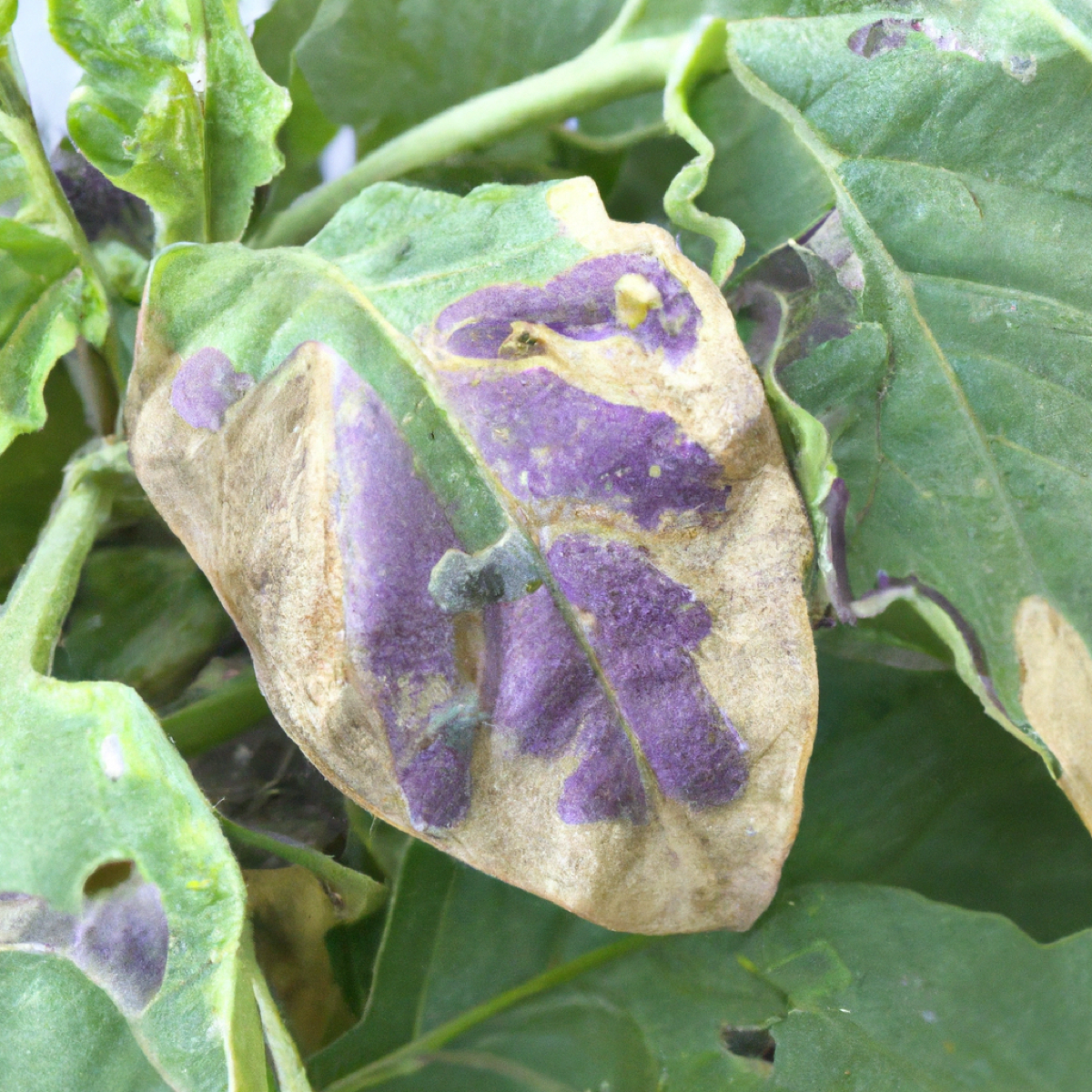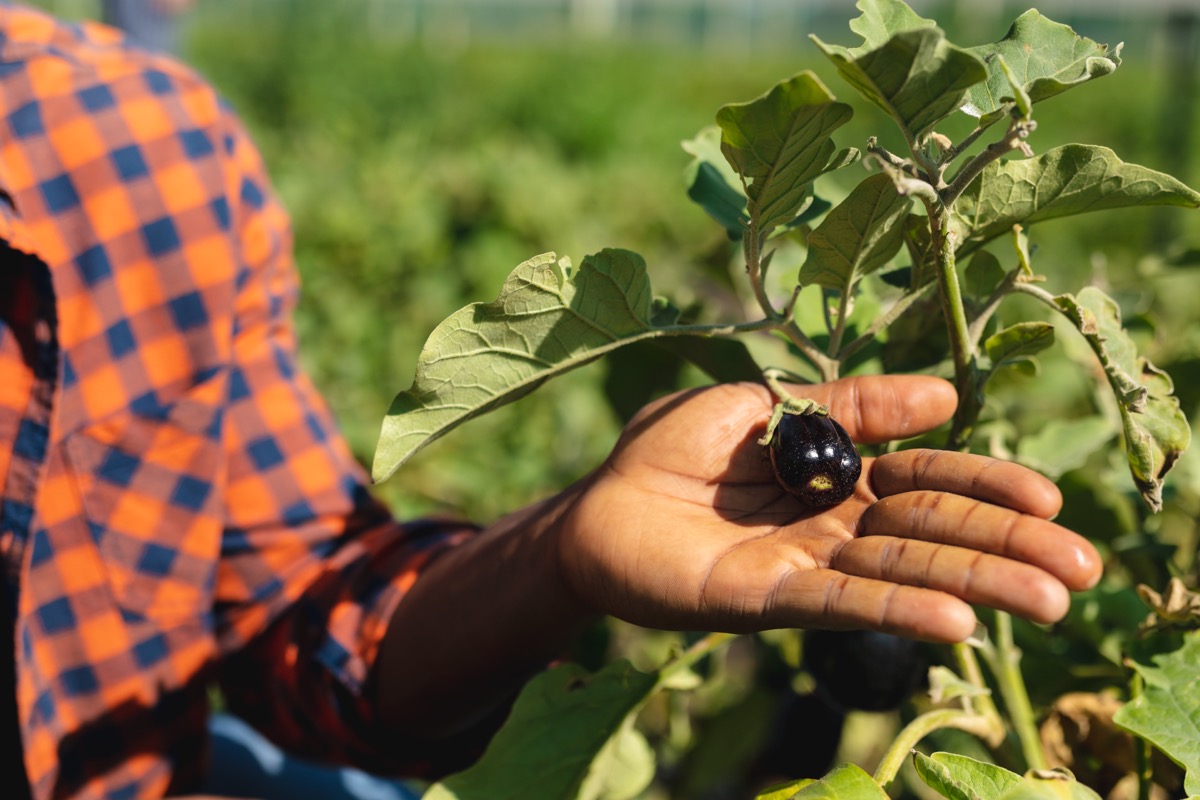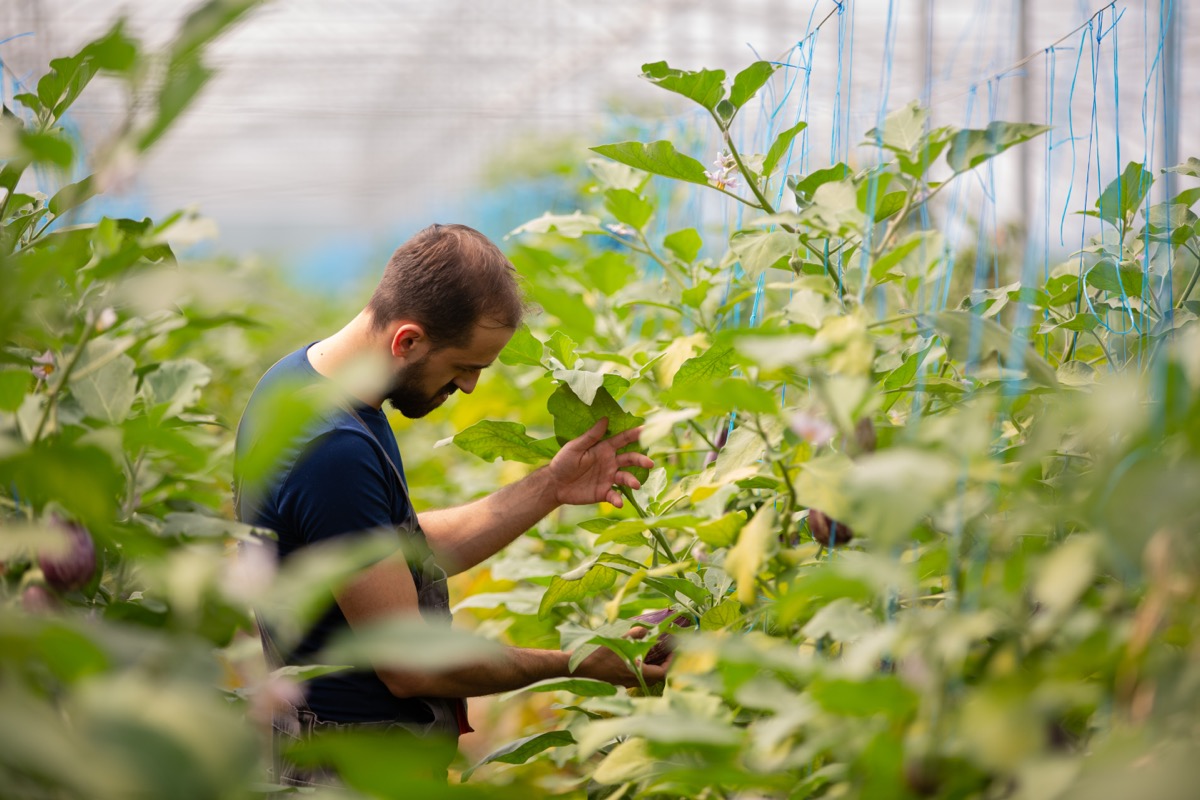Phytophthora Blight is a severe plant disease that results from the infection of cucurbit plants by the oomycete pathogen Phytophthora capsica. This disease can occur at any plant development stage and affects all parts, including cucumbers, squash, and melons. A distinctive sign of Phytophthora Blight is the “powdered sugar” appearance on infected plants.

The disease will likely thrive in saturated soil conditions and prolonged warm, wet weather. Phytophthora Blight is a common disease affecting Eggplants and other solanaceous crops. The condition is caused by the water mold Phytophthora infestans and can cause significant economic losses for farmers.
Phytophthora Blight Management in Eggplant
The Causal Organisms of Phytophthora Blight Disease
The Phytophthora capsici, an oomycete plant pathogen, causes Phytophthora Blight. This pathogen is often called a water mold due to its reliance on moisture to cause damage to the plants it infects.
These Phytophthora species thrive in warm and moist environments, which provide optimal conditions for their growth and can spread through various means, such as infected plant debris, soil, water, and even tools and equipment. These pathogens can cause significant harm to the plants they infect, leading to dry out, leaf drop, and, ultimately, the death of the plant’s tissues.
The Disease Cycle of Phytophgthora Blight Disease
Phytophthora blight is a disease that can occur multiple times during a growing season, and it can produce spores that can remain in the soil or on infected plant debris during the winter months. In the following growing season, these overwintering spores can grow and infect the plant host, initiating the cycle of Phytophthora disease. The symptoms of this disease can reveal quickly, often resulting in plant death within a few days, particularly in soil saturated by excessive rain or irrigation.
Causes/Conditions Favorable for Phytophthora Blight Disease in the field
This disease can cause significant yield losses and be difficult to manage once established in the area. Here are some of the conditions that are favorable for Phytophthora blight disease:
- Warm and Humid weather.
- Poor soil drainage.
- High soil moisture.
- Planting infected seedlings.
- Poor Sanitation and overcrowding
- Lack of crop rotation.
- Presence of other diseases and pests.
- High soil pH.
Symptoms of Phytophthora Blight Disease
The symptoms of Phytophthora blight can vary depending on the type of plants affected, including vegetables, fruits, and ornamentals, but some common symptoms are:
- Wilting: Phytophthora blight can suddenly weaken plants, even if the soil is wet. This can cause the leaves to turn yellow or brown.
- Stem and root rot: When plants get infected with Phytophthora blight, the stems, and roots can turn dark brown or complex for the plant to take in water and nutrients.
- Leaf spots: The plant leaves can have brown or black holes with a yellow ring around them. These spots can get bigger and join together, which can cause the whole leaf to die.
- Fruits rot: The fruit can turn soft and mushy and may change color to dark brown or black. Sometimes, even if the fruit looks healthy, it can be rotten.
- Leaf blight: Small, damp-looking tumors will likely emerge on the leaves. As the disease evolves, the tumors can get bigger and change their color to brown or black.
- Death of plant: This occurs when the disease has progressed to a point where it causes significant damage to the plant’s vascular system, which is responsible for transporting water and nutrients throughout the plant.
In case you missed it: Cercospora Leaf Spot Management in Eggplant: Symptoms, Treatment, Chemical, Biological, Natural, and Organic Control

Percentage of the YIeld Loss Due to Phytophthora Blight Disease in Eggplant
When eggplants get sick with Phytophthora blight disease, they may not produce as many eggplants. Sometimes they might not produce any eggplants at all. This disease can make the eggplants lose 10-50% of their yield; when the condition is terrible, they might lose around 30%.
Phytophthora Blight Management in Eggplant by Cultural Method
- Crop rotation: Avoid planting eggplants in the same field where they were grown the previous year. This can help reduce the buildup of Phytophthora blight pathogens in the soil.
- Sanitation: Remove and destroy any infected plant debris and avoid transferring soil from infected fields to healthy ones. This can help prevent the spread of the disease.
- Plant spacing: Plant eggplants at proper distances to allow good air circulation and reduce humidity levels, creating favorable conditions for the disease.
- Irrigation management: Avoid overwatering and flooding, which can create conditions for the pathogen to thrive.
Phytophthora Blight Management in Eggplant by Biological Method
- Biocontrol agents are beneficial microorganisms that can compete with Phytophthora spp. and suppress their growth. Several bacteria and fungi, such as Bacillus subtilis, Trichoderma spp., and Streptomyces spp., effectively control Phytophthora blight.
- Soil solarization is a non-chemical method that involves covering the soil with a transparent plastic sheet and exposing it to sunlight.
- Plant breeders have developed cultivars that are resistant to Phytophthora blight. Growing these resistant cultivars can help to reduce the incidence of Phytophthora blight in the field.
Phytophthora Blight Management in Eggplant by Chemical Method
- Fungicides: Fungicides can be applied as a foliar spray or soil drench to control Phytophthora spp. Several fungicides, such as metalaxyl, mefenoxam, and fosetyl-Al, effectively control Phytophthora blight.
- Systemic acquired resistance (SAR) inducers: SAR inducers, such as acibenzolar-S-methyl, can stimulate the plant’s defense mechanisms against Phytophthora spp.
- Soil fumigation: Soil fumigation with methyl bromide can reduce the population of Phytophthora spp. in the soil.
- Phosphonates: Phosphonates, such as potassium phosphite, can be applied as a foliar spray or soil drench to control Phytophthora spp. These compounds do not kill the pathogen directly but stimulate the plant’s defense mechanisms.
Phytophthora Blight Management in Eggplant by Organic/Natural Method
- Proper crop management techniques such as improving soil drainage, avoiding over-irrigation, and using disease-free seeds can help to prevent Phytophthora blight from spreading.
- Adding compost to soil can help to suppress the growth of Phytophthora spp. by improving soil quality and increasing the population of beneficial microorganisms.
- Extracts from plants such as neem, garlic, and ginger have been reported to inhibit the growth of Phytophthora spp. These extracts can be used as a foliar spray or soil drench.
Preventive Measures for Control of Phytophthora Blight Disease
- Use resistant cultivars.
- Practice good Sanitation.
- Monitor crops regularly
- Use disease-free seeds or plant material.
- Implement proper crop management practices.
- Maintaining good soil health through proper soil management.
In case you missed it: Damping Off Management in Eggplant: Symptoms, Treatment, Chemical, Biological, Natural, and Organic Control

Conclusion
Phytophthora blight is a disease that can harm plants. People used to use chemicals to control it, but now they prefer natural methods like using helpful microorganisms and plant extracts or covering the soil with plastic to trap sunlight. Other ways to prevent the disease include using healthy plant materials, managing crops carefully, and keeping the ground healthy. People can reduce the risk of Phytophthora blight by doing these things and protecting their crops.
- Beneficial Insects in Pest Management
- Natural Solutions for Pest Control in Flower Gardens
- Types of Fungicides Used in Agriculture
- Common Issues in the Fruit Development Stage of Pomegranate Farming
- Fruit Development Issues in Papaya: Easy Solutions and Treatment
- Soil-Borne Diseases and How to Protect Your Plants
- Practices to Prevent Disease Spread in the Garden
- From Wilted to Thriving: How to Treat Root Rot Naturally in Houseplants
- Natural Remedies to Cure Brown Spots on Fig Tree Leaves